Texas Pest Control OSHA & Licensing Compliance Guide
A Practical Guide to Safety, Licensing, and Risk Management Compliance for Texas Businesses

Safeguarding Your Team, Clients, and Business Through Safety and Regulatory Excellence
Texas pest control professionals manage more than just infestations — they manage chemicals, vehicles, and people’s trust. Every job brings the potential for exposure, environmental contamination, or injury, making compliance a daily discipline rather than an annual checklist.
At Eastman Insurance Solutions (EIS Texas), we help pest control companies create and maintain compliance systems that meet regulatory standards, strengthen insurance performance, and protect both your license and livelihood.
Explore Your Industry Compliance Portal
Below are the dedicated compliance resources curated by EIS Texas. Each section outlines federal and state-specific requirements, plus actionable risk management practices for your industry.
1. Licensing Requirements – Texas Department of Agriculture (TDA)
All pest control businesses and applicators in Texas fall under the TDA Structural Pest Control Service (SPCS), which enforces licensing, certification, and continuing education.
Business Licensing
-
Must hold a Structural Pest Control Business License under Texas Occupations Code Chapter 1951.
-
Must designate a Certified Commercial Applicator (CCA) as the responsible party.
-
Must maintain proof of insurance on file with the TDA (general liability & pollution).
Individual Licensing
-
Certified Applicators and Technicians must pass exams, complete CEUs, and display ID numbers on vehicles and advertising materials.
-
Unlicensed personnel may not apply restricted-use pesticides or supervise treatments.
Reference: TDA Structural Pest Control Licensing
2. OSHA Standards for Pest Control Operations
Pest control companies are regulated under OSHA General Industry Standards (29 CFR 1910), which govern workplace safety, chemical handling, and employee training.
Core OSHA Requirements
-
29 CFR 1910.1200 – Hazard Communication (HazCom):
Maintain an up-to-date chemical inventory, Safety Data Sheets (SDS), and employee right-to-know training. -
29 CFR 1910.132 – Personal Protective Equipment (PPE):
Provide gloves, respirators, and eye protection appropriate to chemical class. -
29 CFR 1910.151 – Medical Services and First Aid:
Provide accessible first-aid kits, eye wash stations, and exposure procedures. -
29 CFR 1910.178 – Powered Industrial Trucks (if operating forklifts):
Training and maintenance documentation required for warehouse or facility operations.
Official Source: OSHA Pesticide Safety Standards
3. Chemical Storage, Handling & Disposal
Pesticides are classified as hazardous chemicals under OSHA and regulated substances under both EPA and TCEQ guidelines.
Storage Requirements
-
Store chemicals in original labeled containers in a secured, ventilated, and weather-protected area.
-
Segregate flammable and oxidizing agents.
-
Maintain spill containment kits on-site and in all service vehicles.
Disposal Requirements
-
Follow TCEQ hazardous waste rules for pesticide and container disposal.
-
Never pour leftover chemicals into drains, sewers, or soil.
-
Keep disposal manifests for at least three years.
Resources:
4. Fleet & Driver Safety
Your pest control fleet carries chemicals and employees across residential, commercial, and industrial sites — meaning OSHA, DOT, and TDA rules overlap.
Fleet Compliance Essentials
-
Drivers must be trained on chemical transport and emergency response.
-
Vehicles must be locked, labeled, and ventilated.
-
Keep proof of insurance and chemical manifests in every service vehicle.
-
Maintain defensive driving logs, vehicle inspections, and spill response procedures.
Hazardous Materials (HazMat) Considerations
-
Pest control chemicals typically fall under DOT Class 6.1 (Toxic Substances) or Class 3 (Flammable Liquids).
-
Any firm transporting quantities that meet DOT thresholds must maintain HazMat registration and driver endorsements.
Reference: DOT Hazardous Materials Regulations
5. Common OSHA Violations in Texas Pest Control Firms
-
Lack of Hazard Communication (HazCom) program
-
Missing or expired PPE and respirator fit tests
-
Improper pesticide labeling or storage
-
No written exposure or emergency response plan
-
Untrained technicians handling restricted-use products
6. Texas Pest Control Compliance Checklist
Licensing & Documentation
-
Verify current business license with TDA SPCS.
-
Maintain insurance certificate on file with TDA.
-
Keep updated CEU documentation for all certified applicators.
Chemical & Storage Safety
-
Maintain an updated chemical inventory and SDS library.
-
Store chemicals in locked, ventilated areas away from ignition sources.
-
Label all containers and secondary dispensers clearly.
Fleet & Driver Safety
-
Conduct and log weekly vehicle inspections.
-
Provide spill-response training for all technicians.
-
Maintain a copy of the company’s emergency action plan in all vehicles.
Employee Safety
-
Conduct annual PPE and respirator fit tests.
-
Document training on chemical handling and emergency response.
-
Provide first-aid and eye wash access in all facilities.
7. Integrating Compliance with Risk Management
At EIS Texas, we help pest control firms translate compliance into performance.
Our consultative model connects OSHA, TDA, and TCEQ standards to your broader insurance and risk management strategy, helping you:
-
Reduce Workers Comp and Pollution Liability losses.
-
Improve fleet safety scores and DOT compliance.
-
Align training and documentation with carrier underwriting requirements.
-
Strengthen renewal positions with clean safety records and proactive compliance documentation.
Service Area – Supporting Texas Pest Control Professionals
We serve pest management businesses across Texas:
Dallas–Fort Worth · Houston · Austin · San Antonio · East Texas · Central Texas · West Texas · Gulf Coast
From small local operators to multi-county commercial pest firms, EIS Texas provides compliance guidance that keeps your business safe, licensed, and profitable.
